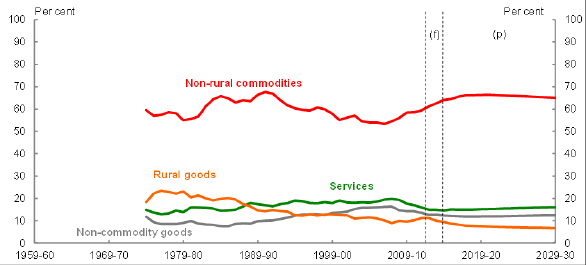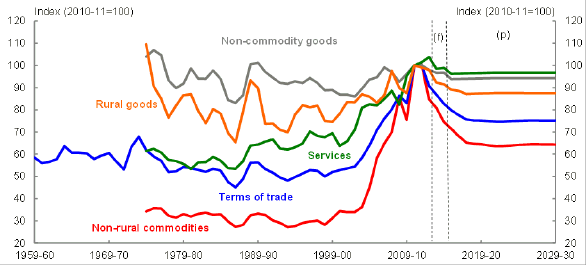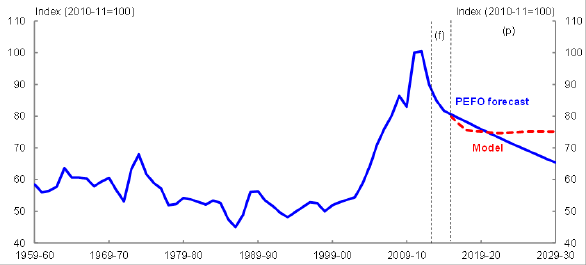The terms of trade can be thought of as a weighted average of the price of export categories relative to the aggregate import price level, with weights equal to the export shares of the export categories. Combining the results of earlier sections, the export share of non-rural commodities is expected to rise over the forecast period and early part of the projection period, while the export share of rural goods is expected to decline over the forecast and projection period (Chart 29).
Chart 29: Export shares — broad export category

Source: Authors’ calculations.
Chart 30: Relative export prices — broad export category

Source: Authors’ calculations.
The relative export prices of all broad export categories are expected to decline until around 2017-18 and remain roughly constant over the balance of the projection period, with the relative price of non-rural commodity exports expected to have the largest fall (Chart 30). Overall, the terms of trade are expected to fall from 2012-13 to 2017-18 and then remain reasonably constant at a level roughly equal to that recorded in 2006-07. Given its export share of around 65 per cent and the size of the expected decline in its relative price, the main cause of the projected fall in Australia’s terms of trade is the forecast decline in the relative price of non-rural commodity exports, which is largely driven by the fall in the relative prices of bulk commodities.
Chart 31: Long-run terms of trade forecast

Source: Authors’ calculations.
Chart 31 reveals that the new framework predicts a more rapid decline in the terms of trade than predicted at the time of the 2013 PEFO. In particular, the model predicts a fall of around 16 per cent from 2012-13 to 2017-18, which compares with the 2013 PEFO terms of trade decline of 13 per cent over the same period.
Finally, as noted in the 2013-14 MYEFO, there are a number of downside risks to this outlook including uncertainty around the global economy, the nominal exchange rate and non-bulk commodity price forecasts (see Appendix A for details). Applying prudent judgement to the model’s outcome results in a long-run terms of trade that settles at the level observed in 2005-06 by 2019-20.